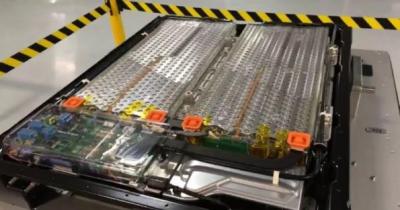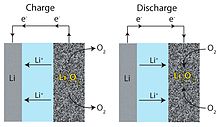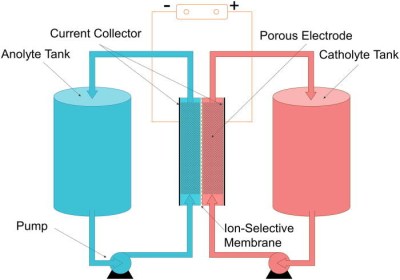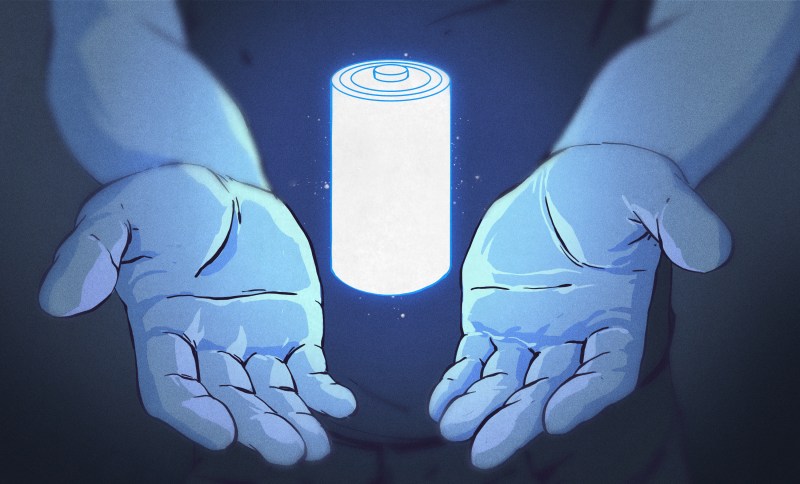Lithium ion batteries have been a revolutionary technology. Their high energy and power density has made the electric car a practical reality, enabled grid storage for renewable energy, and put powerful computers in the palm of the hand. However, if there’s one thing humanity is known for, it’s always wanting more.
Potential contenders for the title of ultimate battery technology are out there, but it will take a major shift to dethrone lithium-ion from the top of the tree.
Dominant For Good Reason
Lithium-ion batteries were first developed by Stanley Whittingham, working at Exxon, who were looking to diversify away from oil in the midst of the major energy crises of the 1970s. Over the years, the technology was developed further, with work by John Goodenough (a superb hacker name if we’ve ever heard one) and Akira Yoshino increasing performance with improved cathode and anode materials. Commercialization was first achieved by Keizaburo Tozawa, working at Sony to develop a better battery for the company’s line of camcorders.

The lithium-ion rechargeable battery has the ideal attributes for portable power, with high energy density and high power density, This means that it can store plenty of energy, and release it quickly for applications that draw lots of current. Low weight and high power output were game changing — technologies where size and weight matter, like quadcopter drones and powerful smartphones simply, wouldn’t be practical with older, heavier battery technologies.
In the years since, the world has fallen in love with lithium batteries. Different chemistries abound, optimising the batteries for more recharge cycles, higher power outputs, or lower cost. Saying production has skyrocketed in recent years is a bit of an understatement, with the coming of age of portable consumer electronics and the electric car revolution running almost entirely on rechargable lithium battery technology.
However, challenges remain. Electric cars are still somewhat range limited compared to their gasoline counterparts, and recharge times further frustrate the issue. Huge gains have been made in recent years, but automakers continue to strive for better performance as a competitive advantage. Additionally, while prices have dropped precipitously in the last ten years, lithium batteries still aren’t exactly cheap. Compounding this is a reliance on minerals that can be scarce or difficult to source. This has been particularly true of cobalt, leading some manufacturers to explore alternative lithium-ion chemistries, and we’re beginning to see success in completely removing cobalt from the equation.
There remains scope for alternative technologies to challenge lithium’s dominance of the battery industry. Any contender will need great energy density and power density, as well as the ability to last for thousands of charge cycles. Additionally, low cost, ease of manufacture, and being less prone to catastrophic failure, are all targets that battery researchers are trying to reach.
On the Cusp of Greatness?
The road from the lab to the factory is a long one, and many exciting projects run into intractable engineering issues long before reaching commercial sale. Breakthroughs are exactly that, the point at which hard problems are suddenly solved, so let’s look at what’s potentially on the cusp of greatness:
Solid State for Lithium Metal and Better Safety

Lithium-ion batteries use liquid electrolytes of a variety of chemistries to tweak performance characteristics for particular applications. However, replacing this liquid with a solid state electrolyte is a hot research topic, as it promises a multitude of gains over current batteries.
Many hold the solid-state electrolyte as the solution that will enable the use of lithium metal anodes in batteries, replacing graphite in most current applications. Typically, lithium metal is an unstable anode material due to dendritic growth caused by chemical reactions with the liquid electrolyte. If a solid state electrolyte eliminated this problem, batteries could use the better performing lithium metal anode material. This would enable a huge gain in energy density, up to 2.5 times greater than conventional lithium-ion batteries.
The liquid electrolyte is also to blame for a lot of the danger inherent in lithium-ion batteries, becoming highly flammable, or even explosive, when a battery undergoes a thermal runaway condition. Solid-state batteries may also solve this problem, with reduced flammability compared to traditional liquid electrolytes.
There are still roadblocks in the way of full-scale uptake of solid state battery technology. Conductivity issues at room temperatures continue to hamper the technology. Manufacturing challenges also exist, with many designs requiring the use of vacuum deposition techniques. Regardless, many companies are pouring money into solid-state battery research, with Samsung in particular working hard to develop the technology.
Lithium Air is Chasing the Energy Density of Gasoline

Lithium-air batteries work by using oxygen in the atmosphere as a reactant. Oxygen donates electrons to the lithium via a carbon cathode. Theoretically, such cells could have a specific energy of 11,680 Wh/kg, close to that of gasoline at 13,000 Wh/kg — far exceeding contemporary battery technologies. Excluding the mass of oxygen, energy density per mass is up to 10 times higher than lithium-ion, meaning the technology would be ideal for increasing the range of electric vehicles.
A multitude of challenges face the lithium-air battery before it can successfully be commercialized. Chemical stability has been a problem of early efforts. Further development of cathode materials continues to bear fruit, but best-case results from lab testing have cells lasting just two months in practice. Charging efficiency is also low — just 65% of the energy put in during charging is usable. Additionally, the requirement for gaseous oxygen as a reactant poses further problems. While lab tests can use purified oxygen, atmospheric air contains carbon dioxide, water vapor, and other contaminants that can damage the battery. These would need to be filtered out in practical designs.
Flow Batteries

Flow batteries are a concept involving two liquids which are pumped through a membrane, exchanging ions and generating electricity in the process — you may remember reading Kristina Panos’ article on liquid air energy storage just a few weeks ago where the technology is being considered for grid storage.
As flow batteries rely on charge stored in liquid form, bigger batteries can be created by simply building bigger tanks for the reactants. The battery can be quickly “recharged” by simply replacing the electrolyte, or alternatively, it can be regenerated electrically like a traditional rechargeable battery. The easy scaling makes the technology appealing for grid storage, while the potential to be able to quickly “refuel” the battery would solve the problem of recharging electric vehicles quickly.
Despite their benefits, flow batteries have some drawbacks which have held them back from any serious use. Storing and pumping liquids is far more mechanically complex than traditional batteries, which can typically be treated as solid lumps of matter that may just require a little cooling now and then. This complexity and extra equipment reduces power density and makes flow batteries less practical for transport applications. Most research focuses on energy storage for home and grid-level applications instead.
Conclusion
It may yet be some time before we see major change in battery technology in most of our devices. It’s likely that solid-state batteries that still rely on lithium chemistries will be the main contender that will overhaul lithium-ion’s dominance in the transport sector, with potential to follow in devices like laptops and smartphones. Lithium-air and flow batteries have further hurdles to overcome before they reach viability.
However, development continues on existing lithium-ion technology by academics and industry all over the world, particularly due to the demand in the automotive sector. With capacity and performance improving each year, we may yet continue to see classic lithium-ion remain as the battery of choice for quite some time to come.
















In before CARBON-14 BETAVOLTAIC FREAKIN’ ROADWAYS.
Sounds tasty! Though Ni-63 is my preferred snack.
VIPs enjoy polonium it seems.
Solar roads are silly. They take delicate solar cells that require sunlight to work and lay them flat (instead of at the optimum angle, losing efficiency) where cars and trucks will shade them, drive on them, spill oil and other car fluids, dump coffee, drop grime, cover with snow and ice –> have to withstand sanding and plowing etc., so you need a thick layer of glass. The glass absorbs more of the sunlight, cutting efficiency.
Far better to put them on a roof or at least raised panels.
Absolutely right!
and what about Sodium based one ? they seems very competitive and not depending on rare material only found in some remote places …
like the ones this french company http://www.tiamat-energy.com/ is developing
On purely theoretical side, guess Lithium is supposed to have higher energy densities, due to higher electrochemical potential and higher circuit voltage. Well, the more potential difference under equal conditions you get, the higher power density is. Yet, sodium is far cheaper and widespread, which is big advantage any day.
Say if you want to use e.g. solar cells to power, say, house, you want to store as much energy as possible “just in case” and probably care of price if it going to be significant amount, while weight and size could be a bit less of concern if that’s put into house basement or so. It also somewhat concern for cars, since battery makes a very sizeable part of overall EV price – and to make matters worse, it doesn’t lasts forever.
No mention of dual-carbon or lithium-sulfur? Both of those are out of the lab and in real-world testing already, there is a satellite running on a dual-carbon battery and prototype aircraft flying on a lithium-sulfur battery.
totally agree, lithium sulfur is probably what aviation has been waiting for.
Ironically, words like this are coming dozens of times every year from all directions. It’s been over 20 years like this.
And still, humans curse batteries in their mobile devices, to extent “external” power banks got wildly popular. EVs barely got feasible. And most of that uses plain LiIon as it boasts highest energy density out of commercially available things – and lowest weight. Something that aviation cares greatly all the time. Well, catch there is that LiIon ia quite violent chemistry in general and doesn’t reacts very well to abuse, being prone to runaway.
I feel like the aspect of mining and processing these materials is often left out. If you are going to talk about battery technology aiding in renewable energy and compare it to gasoline, but then only discuss technical performance and monetary cost, it feels slightly disingenuous. Addressing the environmental and socioeconomic impact of mining and processing should also be included.
Comparing to what ? Oil extraction ? Oil refinement ? Oil transport ? Coal extraction ?
I often see the argument that extracting lithium is bad for the soil, or extracting cobalt requires child workers. But people stay silent about the process of extracting oil that’s, at least 10x more damaging for the planet and the environment (don’t know the exact factor, of if we could even compare pollution).
You’ll extract 3 tons of oil for your car EVERY year, for 20 years, compared to extracting 250kg of lithium ONCE for 20 year.
Correct.
Correct for who? Not for me (which is who the statement was directed at)
3 tons of crude (assuming short ton) is about 218 gallons of oil which will make about 450 gallons. I drive about 10,000 miles a year in my Prius V at about 40MPG, using only about 250 gallons (1.6 tons). That is not taking into account transpiration of the oil or gas. Again, this is a complicated comparison.
Also, why only mention lithium? And why 250kg? That would be a HUGE battery (double Tesla’s biggest.
Also also, why 20 years? A quick google shows average car life in the US is 13-17 years.
This speaks to my issue with these types of conversations, we are all just supposed to smile and nod and accept the underlying hypothesis. I’m not saying the hypothesis is wrong (already told you I drive a Prius, and I have a solar roof…) I’m saying we should strive to be better than that.
sorry, bad copy paste, 3 ton oil = 950 gal oil = 450 gal gasoline
OK, I’ll add a more considered reply.
I’m merely agreeing that sweethack is saying that it’s a matter of priorities. It’s not that abusive mining operations are OK (far from it), but that since we’re faced with a choice of cooking the planet if we burn FF, then whatever we do, that has to be the primary goal.
It is possible to improve mining operations globally even while increasing the amount we extract – we were able to improve the lives of factory workers in the 19th and 20th centuries even as the industrial revolution expanded. However, we can’t fix the problem of burning fossil fuels no matter how well we treat the workers who produce it, or how little direct environmental impact the drilling imposes.
That’s all I meant. I’m glad you’ve taken a step towards decarbonisation with your Prius :-)
>A quick google shows average car life in the US is 13-17 years.
US car age distribution
https://www.eia.gov/todayinenergy/images/2018.08.21/main.png
Cars are getting older because people can’t afford new cars.
Yes, comparing it to all that stuff. Hyperbole like your statement doesn’t help. You don’t know what kind of vehicles I have, how long I’ve had them/plan to have them, where I live, or how much I might drive. If you want to address if thing A is better than thing B with regards to criteria Y, then we need all the details of both things for that criteria. If someone wants to write an article just talking about the tech, that is great. If you want to start wading out beyond just the tech, you shouldn’t rely on unspoken ‘truths’. On a site that prides itself on data driven conclusions, I expect better.
I think both you and ‘jake’ have a point, but we cant afford to have tunnel vision in either direction. Presently, there exists a lot of technologies and infrastructure for recycling oil and other petroleum products, so I think your extraction claims might be a bit biased. There also exist technologies that can produce carbon neutral hydrocarbon fuel by CO2 sequestration that could be burned in internal combustion engines, though not yet in widespread use, deserves to be explored. We could potentially reduce our dependence on oil extraction even more if not eliminate it.
Do you have a factual reference that defines your claimed 10x more damaging figure for oil vs. raw material for batteries? The chemicals and processes used to simply extract the rare earths needed to make batteries are pretty nasty, and always seem to be glossed over when discussing battery technology; Not to mention the strip mining used to get the huge amounts of basic raw ore needed to perform the extraction of a small quantity of the material needed in the first place.
So far, dealing with the waste stream that will result from wide spread adoption of electric vehicles, not to mention sourcing enough raw material in the first place, have yet to be discussed in the general public forum.
These are all concerns and problems that need to be addressed, as these technologies will impact world wide economies and the environment. Among the concerns mentioned by ‘jake’ , we haven’t even begun to address the enormous Electrical Grid burdens that WILL come with widespread adoption of an all electric transportation infrastructure; hell, at this point, we cant even seem to deal with trying to shift our energy sourcing to more renewable means for our current level of consumption! (Case in point – the latest challenges being faced by California re. blackouts, that was discussed yesterday).
Thank you for seeing my point and not just jumping on me ‘x3n0x’. We can, and must, take a holistic view rather than just focusing on the exciting technology aspects.
also every person i know that actually drives their electric car gets an avg of 7 years on their batteries. so basically triple your consumption estimates of lithium.
Add please, a solar panel comparison?
Compared to stopping this whole energy business entirely. We can always just go cold turkey and let things sort themselves out.
Oh, yea, have fun living close to e.g. low-tech oil refinery (there’re still plenty of them around the globe). Then you’ll tell us more about environmental and health impact, you’ll have very good reason this way.
Not to mention any gasoline things inevitably puts carbon into air at the end. Something that is extremely harmful for climate. No matter what organic stuff you burn, it would end up being CO2 + H2O as absolutely best outcome. Later is harmless, buf former is a source of climete trouble. And there is simply no way around it. I’d say, leave carbon where it belongs: ground. Not the air.
Is the quoted energy density of Lithium-Air, before, or after, the oxygen had reacted with the lithium, and doubled the mass of the battery? Such considerations are doubly important for aircraft applications, usually you land with less mass than you started with, not more….
How about beryllium? 2 free electrons instead of lithium’s 1, and only 30% more massive per atom.
There are the problems of scarcity and toxicity…. I have no idea if it has good potential as a battery, but there is a 1975 patent of the Citizen Watch Company.
Electric cars are not yet practical
This isn’t true. In a very practical way, our Zoe BEV is more practical than our previous Smart ForTwo. In the previous car we were always very careful to drive as little as possible and we bought a small, relatively efficient car (at a time when Hybrids were far less affordable), because we could get around 50+ mpg from it. Even so, to minimise the impact, we drove maybe only a few times per week.
With the Zoe, we can drive as much as we want (we charge using renewable energy); so even in the 3.5 years we’ve had it, we’ve clocked up nearly 40K miles. It’s quite literally a more practical car, and it has room for 3 passengers so we can give lifts, which we couldn’t before.
And our Zoe cost only £7500 with 693 miles on the clock.
So you’re using “it’s electric” as an excuse to consume more resources. Got it.
Actually electric cars have been practical for over a century, it’s the batteries they put in them that is still the problem.
in what setting? Daily commute? Cars are bad solution for daily commute doesn’t matter if they are electric or you throw cow dung into a steamer, as countles examples around world showed cities need efficient public transport and here electric is really good and tested solution with history longer than gasoline buses – trams, subways, trains, trolleybuses. For daily commute for rural areas? they are great option one you can have own PV and or Wind turbine and the mileage you do is not that big of a deal in USA average commute is 16 miles/day triple that and its still not a big deal for electric. For roadtrips? Its better for your health and safety if you do at least 15 minutes break every two hours you can plug it in at charging station go pee, grab something to eat, coffee do few sit ups, run around car to get your blood pumping and you’ll have charged your car for next leg. Goods transpportation on longer distance that should be on trains and river barges anyway not on semi but even then you can just put wires over few miles of highway in some distance and pantographs on trucks and do recharge on the go(don’t know USA regulations but in EU truck drivers have limits how much they can work so even this sollution isn’t that badly needed they can recharge at truck stops and logistics yards). Last leg from lgistics center to end client – thats doable with electric you can even have some battery swapper at yard where robots take out discharged pack and put charged one. The real problematic are sales reps that clock daily many many miles spend multiple hours driving from one client to other but then its a bit of a dying proffesion with internet i was sales rep and i visited my clients only few times a year usually after new year with new callendar with naked ladies(automotive so tits still sell tough the callendars get more and more artsy and less pr0ny) and new catalogue. Where i see biggest problem is agricultural equipment they don’t have big mileage by year but once they work they work non-stop for long hours harvesters during season are like only 4-5 hours of stop for drivers to sleep and eat and they go on because weather windows are tight where i live but then just swap battery packs i can imagine pickup truck with robotic arm doing it almost on the go (if Koreans can get their artilery loaded up while travelling – K9 arty+ K10 loader then we can do it with less explosive things on stop). Everything else like mining equipment, construction, garbage trucks can get robotic battery changing stations with fast swap – drivers should have limited time of work anyways so its not like company is going to loose money when its diggers and dozers charge at night. So we end up only with things in remote areas like logging and so on and that carbon footprint can be easily absorbed by nature.
That’s maybe some of the longest sentences I’ve ever seen…
Sorry English isn’t my native language :(
Trams and subways proven to have their share of the problems this year. Say, they’re good to spread diseases due to being crowded at rush hours. And when whole humankind struggles… somehow, cars proven to be safest way to get from A to B without getting infected in process.
Flow batteries have been used in Australia on a large scale for decades, shipping container size units installed next to critical infrastructure, or the HQ of telecommunications companies etc. It is just that they were not really needed much until recently when the power grid became very unstable due to the integration of renewables, and the rampant capitalism of real time energy markets, +20 years ago Australia had very reliable and cheap electricity. Now large battery systems are required to smooth out transient instabilities, they are not used to power anything for hours at a time.
Maybe our future batteries will be nuclear?
https://newatlas.com/energy/nano-diamond-battery-interview-ndb/
I would guess those to be about as good as any other betavoltaic batteries – and maybe many times worse. The half life of Tritium compared Carbon-14 is 500 fold, so unless they’re packing some other unspecified radioisotope inside the cells the decay rate is too low to be of any practical use.
I smell snakeoil.
Looking at the article for clues as to numbers, I noticed the DIP package with “100uW” and 11 pins (0.1″ spacing?) per side. Don’t know whether to trust those numbers, however that doesn’t seem too dense.
Hype seems to be common for energy source articles, perhaps to encourage researchers to talk to journalists? E.g. piezoelectric sources providing high voltage at negligible current may be described as equal to the number of 1.5V batteries that would give the same voltage (but at 1+Ah instead of 1uAh).
Wait for numbers before getting too enthusiastic.
That’s all hype. The decay rates are too low to run anything high powered using a reasonable quantity of radioisotope.
Articles like that talking about running an EV for 90 years without recharging are pure BS.
the numbers just don’t work. You would need tons of the stuff to generate enough power to move a vehicle, but then the vehicle couldn’t move, because it’s carrying around tons of purified radioisotope, and whatever’s needed to contain it.
They could be useful for micro-powered devices, like clocks or simple sensors designed for extremely low power consumption, but they won’t even have enough power density to run a phone, never mind vehicles.
Or maybe stop speculating about which batteries will be better than Lithium Ion, Lithium Iron and so-on and just get on with buying a current electric car when you need a new or a new-second-hand car. Remember that we’ve had Lithium Ion for 50 years now and they’ve only been good enough for cars for a few of those, maybe whatever chemistry is actually better will take another 50 years to get good enough for cars, by which time a lot of us will be done with driving or dead from old age.
This
The quiet achiever at present is the liquid metal battery from Don Sadoway & his team at Ambri. When released via licensing to manufacture in a year or so this will forever change the future of the distributed energy grid. So far they have been quietly improving the design and accumulating the necessary hours in service to be permitted to sell systems for use on the grid. Soon they will have achieved the necessary hours of operational testing to be able to provide the long term performance and lifetime guarantees necessary to supply major energy system operators.
While I am an unabashed Musk fanboy I think that for large stationary applications Sadoway has a better answer to the problem. I would love to see Tesla license the design as it would free up new lithium for use in vehicles and powerwalls while being a perfect fit to Autobidder in better dealing with the multi-megawatt behemoths required for running the grid.
As much as i would like to share in your optimism about the liquid metal battery, i think it is time to face facts and accept that ambri will not live up to its promise. It has been a decade and nothing of value has been produced. This company should serve as a lesson against allowing hype and academic celebrity from obscuring the reality of the situation.
To all the commenters: I thoroughly enjoyed reading this string of comments. All your points of view were informed and informative. I found myself doing some google searches to follow up on what several of you wrote. Your respect for one another’s points of view is laudable. While these comments demonstrate how difficult it is to holistically assess the costs and benefits of new technologies, it also shows that well meaning people can not only “agree to disagree,” their dialog deepens the understanding of all of us. Posts and comments like this are the internet at its best. Thanks to all for your contributions.
Kudos to you also kind sir
can it self recharge and break the 120v barrier into 240v and beyond here for laptops mobile and desktop pcs and antminers here in said battery/psu designs?
The article didn’t say much – certainly no useful specifics. It would have been very interesting to have read something on Lithium Titanate batteries, which are claimed to be much more robust; twice the life and more resistant to deep discharge.
They are also reputed to be much less prone to self immolation than other Li chemistries.
Redflow have for several years made a usefully-sized (10 kWh) Zn-Br flow battery, but focus mostly on the telco market now, as you need two of them for adequate charge and discharge rates. They’re also only 80% efficient, as opposed to 96% for some Li chemistries. You can though discharge them dead 100% flat, leave them a few years, and charge them up as good as new afterwards, without loss of working life. (In fact, they _have_ to be 100% discharged every week or two, to maintain a long life.